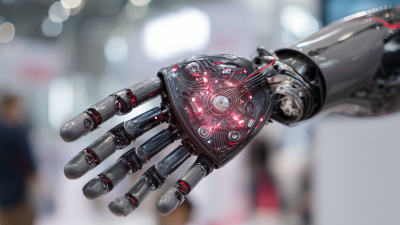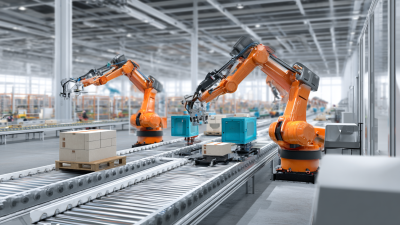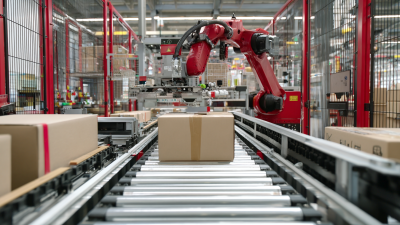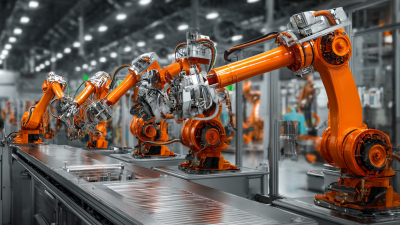Unlocking the Future of Work with Robotic Process Automation for Everyday Tasks
In an era defined by rapid technological advancements, the future of work is being reshaped by innovative solutions that enhance productivity and efficiency. One such revolutionary approach is the implementation of robotic process automation (RPA) in everyday tasks. RPA streamlines and automates repetitive processes, enabling organizations to allocate valuable human resources towards more strategic and creative endeavors. This shift not only improves operational efficiency but also fosters a more engaged and satisfied workforce. As businesses increasingly recognize the potential of robotic process automation in transforming mundane activities, they unlock new opportunities for growth and innovation. This introduction explores the various aspects of RPA, demonstrating how it paves the way for a smarter, more agile workplace that adapts to the demands of the modern economy.

The Rise of Robotic Process Automation in Modern Workplaces
The rise of Robotic Process Automation (RPA) in modern workplaces represents a transformative shift in how businesses operate daily. With the increasing demand for efficiency and accuracy, organizations are turning to RPA to streamline repetitive tasks and reduce human error. From data entry to invoice processing, RPA tools can handle these mundane functions with speed and precision, freeing up employees to focus on more strategic initiatives that require human creativity and critical thinking.

Moreover, the adoption of RPA is not limited to large enterprises; small and medium-sized businesses are also leveraging this technology to enhance productivity and competitiveness. By automating everyday tasks, companies can not only save time and resources but also improve employee satisfaction, as workers are relieved from tedious tasks that can lead to burnout. As RPA continues to evolve, it is poised to redefine workflows, ensuring that teams are not only more efficient but also more engaged in their work, ultimately unlocking new levels of innovation and growth in the modern workplace.
Exploring the Benefits of Automating Everyday Tasks
As businesses strive to improve efficiency, Robotic Process Automation (RPA) has emerged as a vital tool for automating everyday tasks. According to a report from Deloitte, organizations that implement RPA can witness up to a 30% increase in productivity, freeing employees from mundane tasks and allowing them to focus on strategic initiatives. Moreover, a McKinsey study suggests that automating repetitive tasks can reduce operational costs by 20% to 25%. This shift not only enhances the quality of work but also contributes to job satisfaction, as employees engage in more meaningful activities.
Tips for successful automation include starting small with pilot projects to gauge effectiveness and identify potential challenges. It’s essential to involve employees in the process, as their insights can help streamline implementation and ensure ease of use. Additionally, companies should invest in training to ensure staff are equipped to work alongside RPA tools, which fosters a collaborative environment where technology enhances human capabilities.
The benefits of automating everyday tasks are significant. By leveraging RPA, businesses can create a more agile workforce that adapts quickly to changes. With improved accuracy and speed in executing routine activities, organizations are better positioned to innovate and respond to market demands effectively. Embracing such technology not only boosts operational performance but also paves the way for a future where employees can prioritize what truly matters.
How RPA Enhances Employee Efficiency and Job Satisfaction
Robotic Process Automation (RPA) is transforming the workplace by enhancing employee efficiency and increasing job satisfaction. As organizations embrace digital transformation, RPA empowers employees by automating mundane and repetitive tasks, allowing them to focus on more strategic initiatives. This shift not only boosts productivity but also fosters a sense of achievement among workers who can apply their skills to complex problem-solving rather than monotonous activities.

The integration of artificial intelligence with RPA further amplifies these benefits. Advanced AI algorithms enable RPA systems to handle more intricate decision-making processes and data analysis, making them capable of supporting diverse business operations across industries, including retail and healthcare. By introducing "digital employees," companies can improve service delivery and operational efficiency, ultimately leading to a more fulfilling work environment for human employees. This technological advancement is a crucial step towards creating a future where human potential is maximized, significantly enhancing overall job satisfaction.
The Future of Work: Integrating RPA with Human Talent
The integration of Robotic Process Automation (RPA) with human talent is a
transformative shift that companies are increasingly adopting to enhance productivity and effectiveness in the workplace.
According to a report by Deloitte, 53% of organizations are currently using RPA, and 78% plan to augment their automation strategy within the next two years.
This trend indicates a growing recognition of RPA as a pivotal component for streamlining operations while allowing employees to focus on more strategic tasks.
RPA technology excels in handling repetitive and structured tasks, unburdening human associates from mundane responsibilities.
A study by McKinsey found that up to 45% of activities that individuals currently perform could be automated, freeing up valuable time for creative and problem-solving initiatives.
As RPA tools are adopted, employees can leverage their unique capabilities—such as critical thinking and emotional intelligence—to drive innovation and lead projects that require a human touch.
This symbiotic relationship between automation and human talent is essential in creating a workforce adept at navigating the complexities of the future.
Challenges and Considerations in Implementing RPA Solutions
Robotic Process Automation (RPA) has emerged as a transformative tool for enhancing operational efficiency across various sectors. However, the implementation of RPA solutions is not without its challenges. According to a 2023 report by Gartner, nearly 30% of RPA initiatives fail to meet their objectives due to a lack of clear strategy and insufficient change management. Organizations often grapple with aligning RPA projects with their broader business goals, leading to disjointed efforts that fail to deliver the anticipated ROI.
Moreover, the integration of RPA into existing workflows presents another layer of complexity. A survey by McKinsey highlights that 60% of companies face difficulties in scaling RPA beyond pilot programs due to inadequate IT infrastructure and resistance from employees concerned about job displacement. Thus, organizations must invest not only in technology but also in employee training and engagement to foster a culture that embraces automation. Addressing these challenges is crucial for unlocking the true potential of RPA, ensuring it contributes effectively to everyday tasks and strategic objectives alike.
Unlocking the Future of Work with Robotic Process Automation for Everyday Tasks - Challenges and Considerations in Implementing RPA Solutions
| Dimension | Description | Challenges | Considerations |
|---|---|---|---|
| Task Automation | Streamlining repetitive processes, such as data entry and invoice processing. | Integration with existing systems can be complex. | Ensure compatibility with current IT infrastructure. |
| Cost Efficiency | Reduction in labor costs and increased productivity. | Initial investment can be high. | Analyze ROI to justify upfront costs. |
| Employee Roles | Shifts focus from mundane tasks to strategic thinking. | Fear of job displacement among staff. | Implement change management strategies. |
| Data Security | Ensures secure handling of sensitive information. | Vulnerabilities may arise with automated processes. | Regular security assessments and updates are crucial. |
| Scalability | Easily scalable to accommodate growing business needs. | Scaling may lead to increased system complexity. | Design systems for flexibility and scalability. |
Related Posts
-

Unleashing Digital Transformation: The Ultimate Guide to Robotic Process Automation Software
-

Exploring Robotic Process Automation Tools at the 2025 China 138th Canton Fair Insights and Innovations
-

What Are the Advantages of Using Robotic Process Automation Tools
-

Future of Warehouse Robots at China's 138th Canton Fair 2025 Industry Insights and Market Growth Trends
-

Transforming Logistics: Cobot Palletizers at the 138th Canton Fair 2025 – Industry Insights and Innovations
-

The Future of Work How Industrial Robots are Transforming Manufacturing Industries
Smart Robotics brand movie
Watch video


